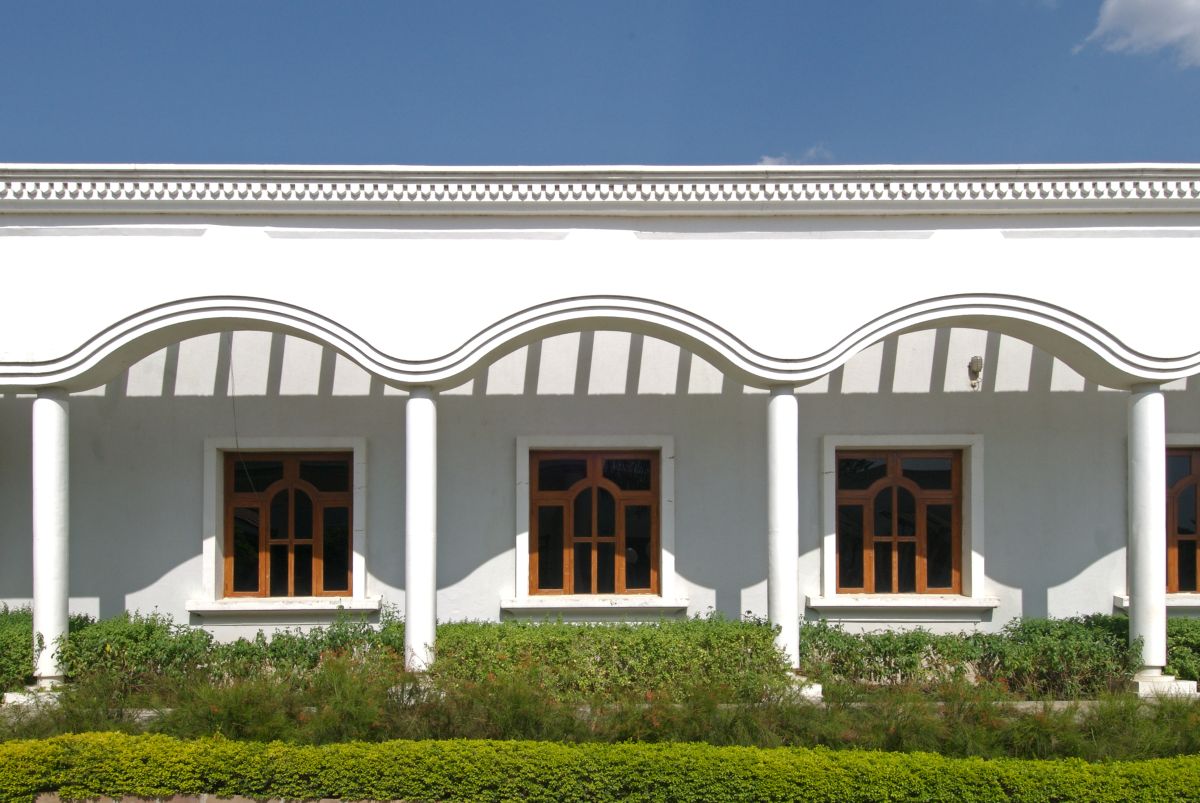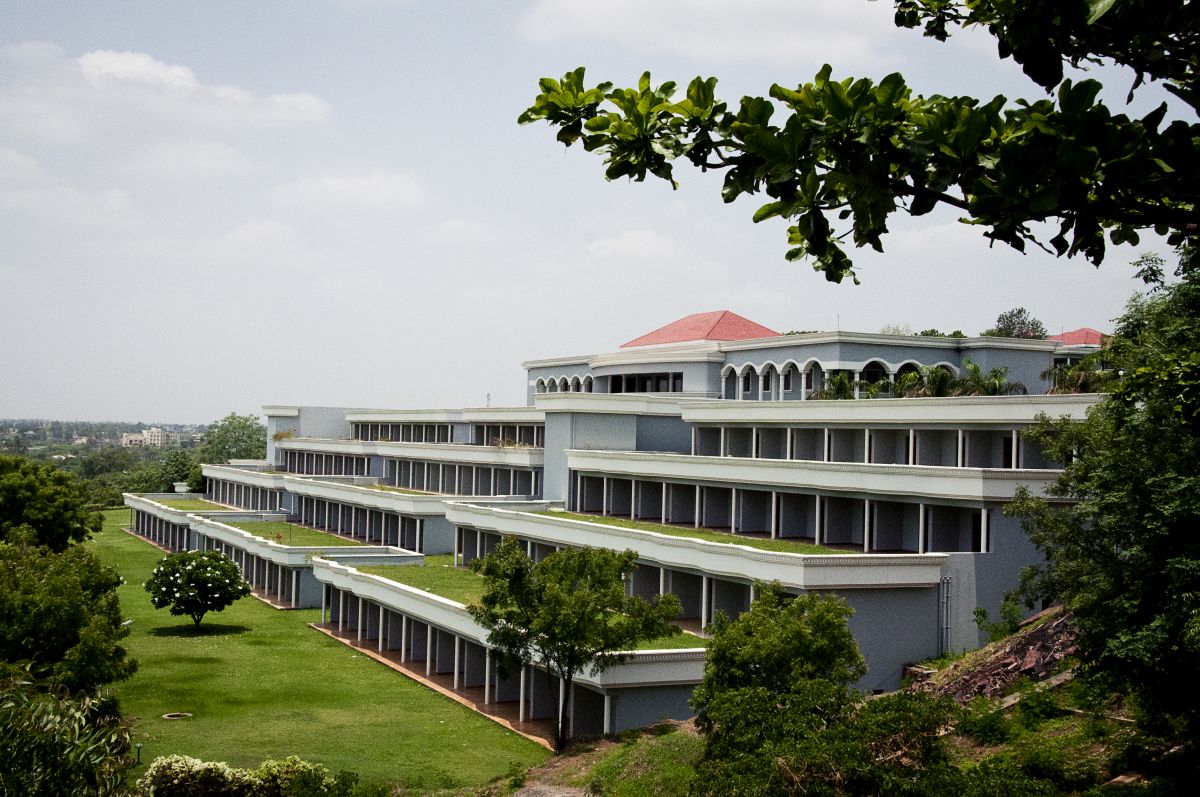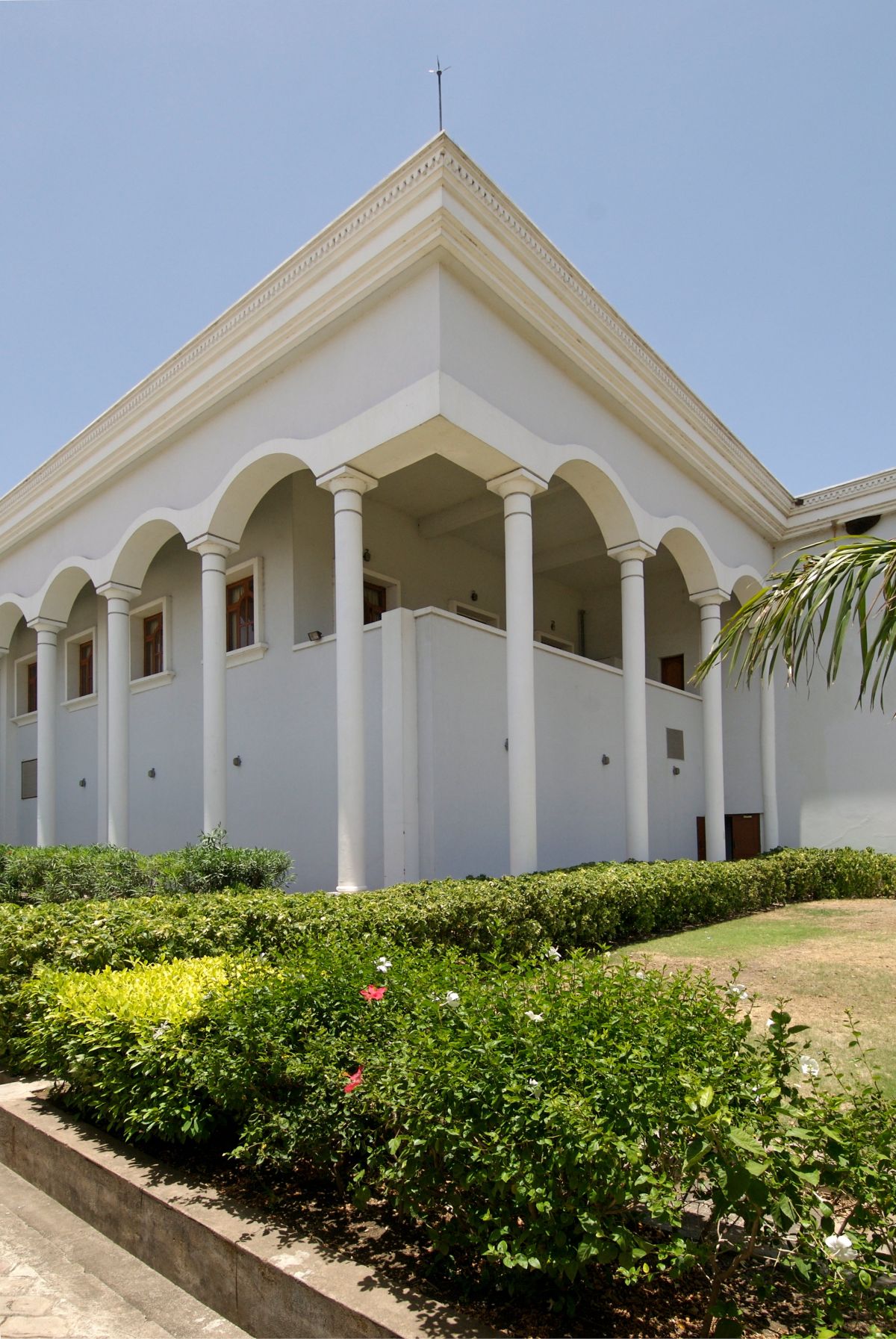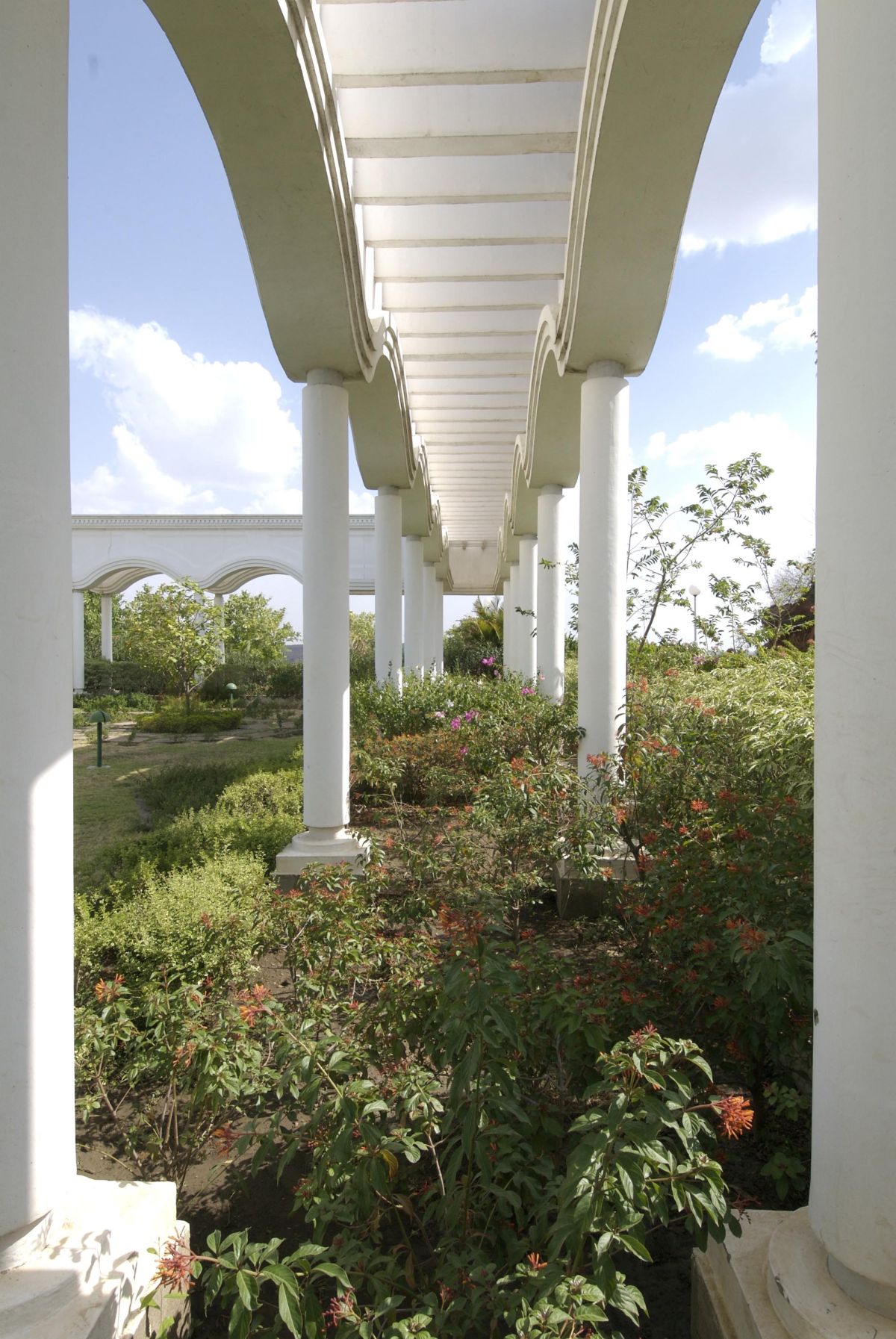Perched on the crest of a hill in Bhopal, India, the 28,000-sq.m National Judicial Academy is a training academy for Judges, a centre for discussion and debate on the judicial system and an institute for ongoing research on matters of the law. The campus occupies 60-acres of fissured rock-steep slopes on the hill, which was formerly used as a quarry.
Site and Master planning
The program developed as a response to the context with an endeavor to restore the land to its pristine state, and create a built mass that befits the topography. Carrying forward this intent, the landscape strategy employs native vegetation that requires minimal maintenance to reclaim the site. Further, the buildings are placed amidst lush green gardens to create a resort-like environment for the judges. The building heights, have been kept low to frame unobstructed views of the lake, and follow a stepped profile in response to the hill’s gradient. This composition allows for the creation of terraces at various levels that blur the boundary between the built form and its natural setting.
Further, the placement and orientation of the building blocks on the site follow the natural topography—the larger built mass occupies a relatively flatter terrain on the peak, while smaller built masses occupy the slopes on the south side to minimize the artificial modulation of the contours.
The site planning is done to frame picturesque views of the ‘bada taal’ and ‘chota taal’. Functions within the site are organized into clusters: academic block, auditorium, research centre, staff housing, hostels and VIP guest houses, accessed by a central road. This road connects the two main entrances to the site; leading to the academic block, and the staff housing blocks respectively.
Architecture and Design
The main academic block sits at the helm of the site. The block is designed around courtyards of varying size and character — establishing itself as a continuum of the verdant landscape. It has been planned on an orthogonal grid of 9 squares, with administrative offices, seminar rooms, library and recreation facilities occupying four corners of the grid, thereby leaving the remaining spaces for courtyards. These blocks are further divided into smaller landscaped courtyards to create an inside-outside connection, bringing in the verdant landscape.
The courtyards’ not only aids in climatic control but also bring in daylight and ventilation that are essential for the proper functioning of the building. Further, by landscaping these intermediate spaces with green vegetation, the design reduces heat gain through the effect of evaporative cooling.
The southern slope of the hill, overlooking the water body, is occupied by the auditorium, and the guest house. The auditorium is placed, near the main entrance to minimize disturbances on the site during any events. The guest house, on the other hand, is placed near the centre of the site and overlooks the water body— its design follows the natural gradient of the site, which creates private landscaped gardens at each level to function as a spillover space for the users. Staff residences are placed away from the main academic block to provide a quiet environment to the residents of the site.
Leveraging the site’s location, VIP Accommodation and Research centres, akin to staff residences are placed amidst areas with copious amounts of green cover. This acts as a buffer and provides a therapeutic environment to the visitors. Their access through a branching road further minimizes the disturbance that could otherwise arise.
Climatic Considerations
The design for the National Judicial Academy responds to its context and climate of the locale through passive design strategies. The pergola, running along the periphery of the building and courtyards, shades large openings and regulates the micro-climate of the interiors. The corridors too, are deep-set and protected by colonnades that create a smooth transition between the indoors and the outdoors. Varying in character, yet unified by architectural elements, a series of arches, intricate eaves and moulding details adorn colonnades that run along with the courtyard — drawing allusions to the Islamic architectural style, prevalent in Bhopal.
Project Facts –
Firm Name – IMK Architects | Rahul Kadri
Built-up Area: 28,000 Sq.m.
Location: Bhopal, Madhya Pradesh
Status: Completed – 2005
Client: The Supreme Court of India















